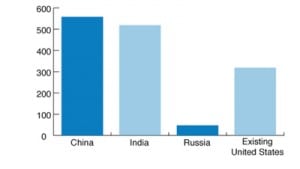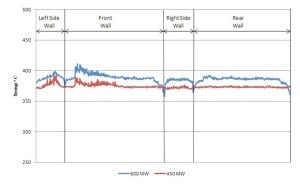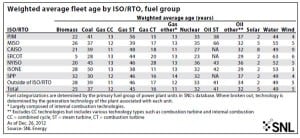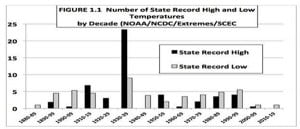In This Issue
-
Coal
Countries Worldwide Propose to Build 1,200 New Coal Plants
While the war on coal is working to reduce coal generation and consumption and associated carbon dioxide emissions in the United States, many world economies are looking toward coal for future generation needs. China, India, Russia, and Germany, to name a few, are building coal-fired power plants.
-
Coal
EPA Tightens Fine Particulate Matter NAAQS
The Environmental Protection Agency (EPA) issued a final rule in December that strengthens its National Ambient Air Quality Standard (NAAQS) for fine particulate matter (PM2.5) to 12.0 micrograms per cubic meter (μg/m3) but declared it would not finalize a proposal to update separate secondary PM2.5 standards. The final rule’s issuance was lauded by environmental and public health groups, though industry groups opposed it, citing concerns that nonattainment areas would suffer economic setbacks.
-
O&M
Report: Fuel for Power Generation to Lead Energy Growth Through 2040
Fuel for power generation will account for about 55% of demand-related energy growth through 2040, ExxonMobil forecasts in its latest annual energy forecast. Like several other forecasters, the Irving, Texas–based oil and gas company also predicts that natural gas will emerge as the leading source of electricity generation by 2040.
-
Coal
EPA Finalizes Standards for Industrial Boilers, Certain Incinerators
The Environmental Protection Agency (EPA) on Dec. 20 finalized changes to a specific set of adjustments to the Clean Air Act that apply to coal, oil, natural gas, and biomass boilers and certain solid waste incinerators.
-
Commentary
Cracking the Code
Embattled Environmental Protection Agency (EPA) Administrator Lisa Jackson announced her resignation on December 27 citing the pursuit of “new challenges” and “opportunities to make a difference” as the reasons for leaving her high-profile post. I suspect her departure was caused less by altruism and more by self-preservation.
-
O&M
Jinzhushan 3: The World’s First PC-Fired Low Mass Flux Vertical Tube Supercritical Boiler, Part 3
The world’s first supercritical pulverized coal–fired low mass flux vertical tube Benson boiler is Jinzhushan 3, located in the Hunan Province of the People’s Republic of China. The 600-MW Babcock & Wilcox Power Generation Group Inc. once-through boiler burns Chinese anthracite using downshot pulverized coal (PC) technology. Part 1 of this three-part article presented a summary of the project design features. Part 2 discussed the boiler technology. This third and final part reviews the plant’s performance test results.
-
O&M
America’s Aging Generation Fleet
Proposed U.S. Environmental Protection Agency rules and a greater reliance on newer generation technologies have put the nation’s aging fossil-fueled generation units at risk of retirement. The numbers demonstrate that the U.S. power generating fleet is older than you may believe.
-
Commentary
EPA’s CO2 Regulations are NOT Based on Sound Science
An open letter published in the Washington Examiner by a group of climate scientists and meteorologists states why they believe the theory of anthropogenic warming is far from settled science and the actions of the Environmental Protection Agency (EPA) have disregarded established methods of scientific inquiry.
-
Commentary
Carbon Tax Would Raise Unemployment, Not Swap Revenue
Interest in a carbon tax seems to be growing in Washington as a means to increase revenue for the federal government and to fight climate change. There are three good reasons why instituting a carbon tax is a very bad idea.





